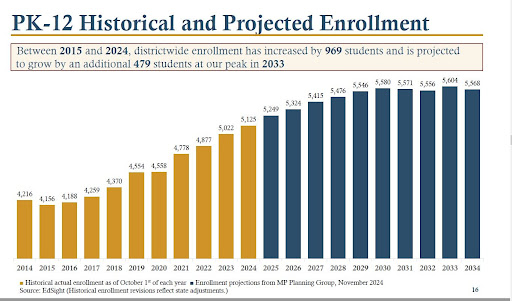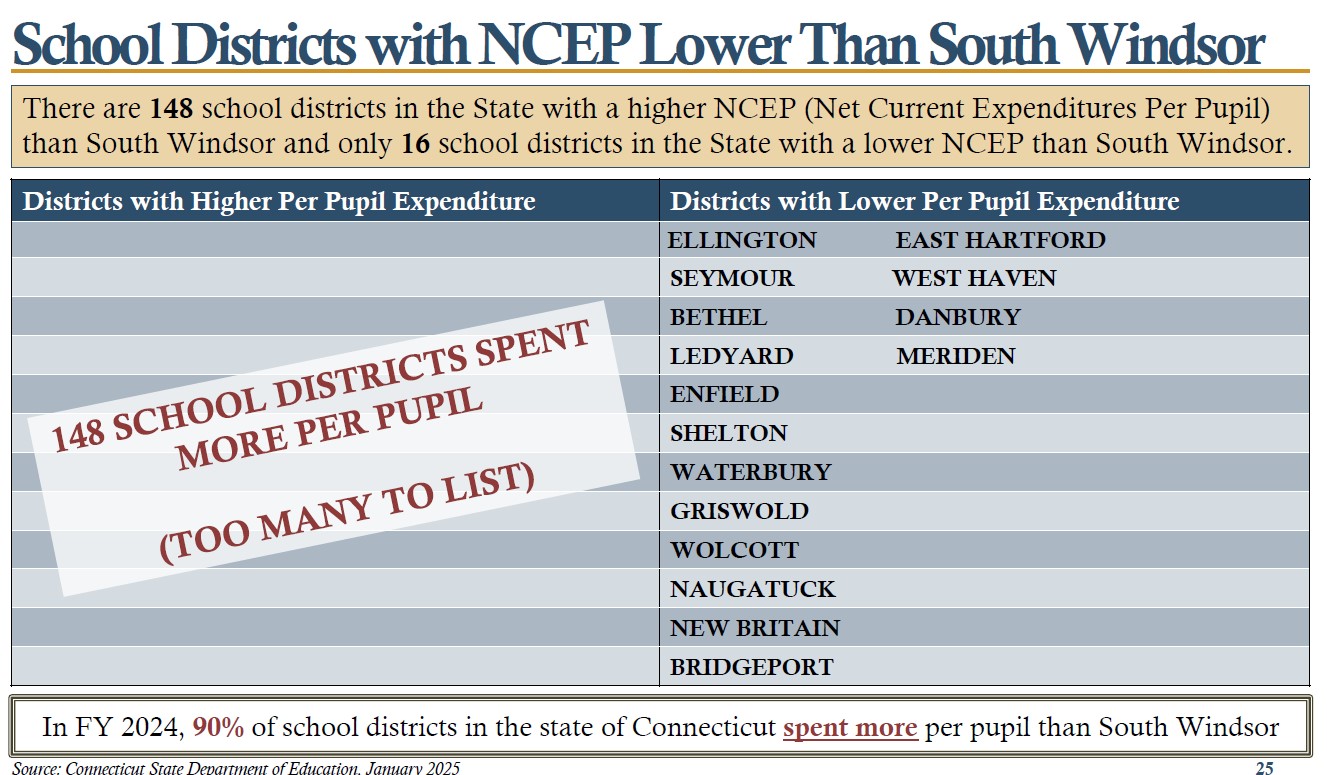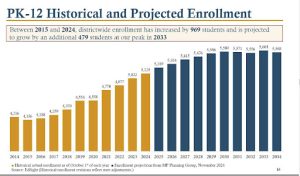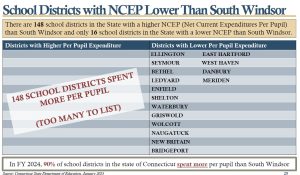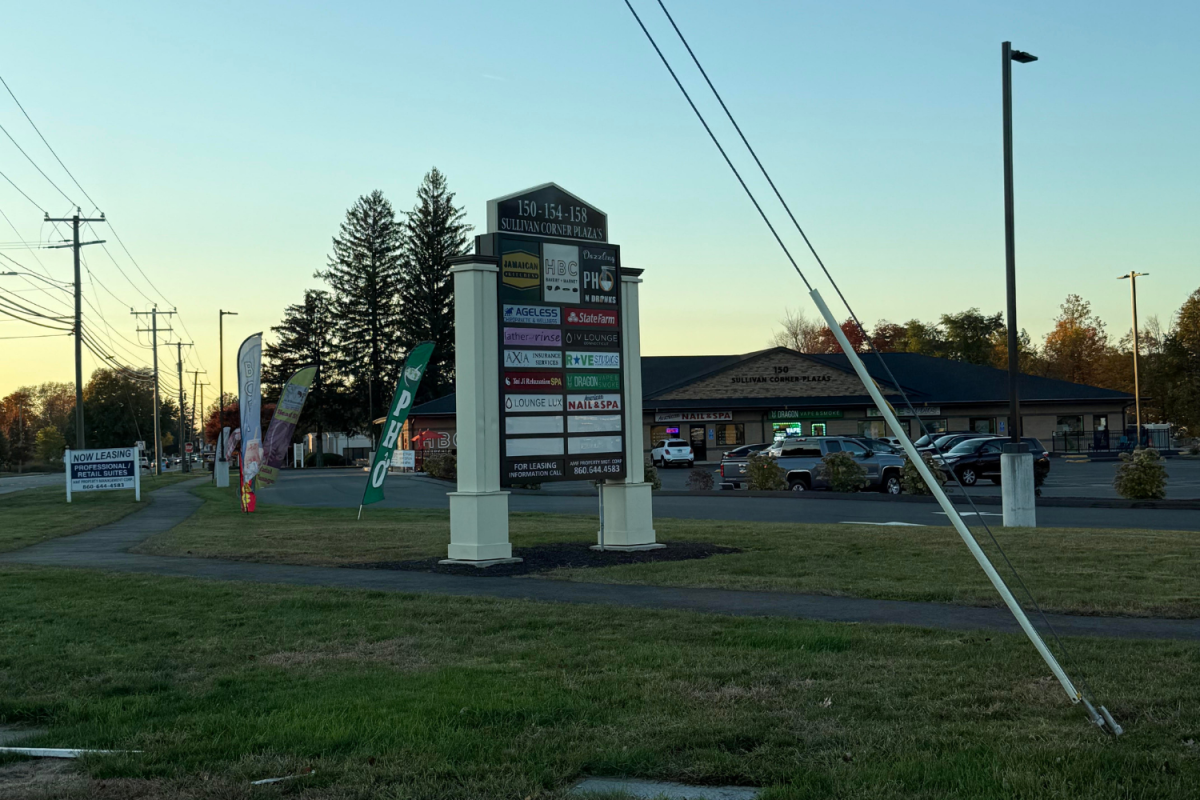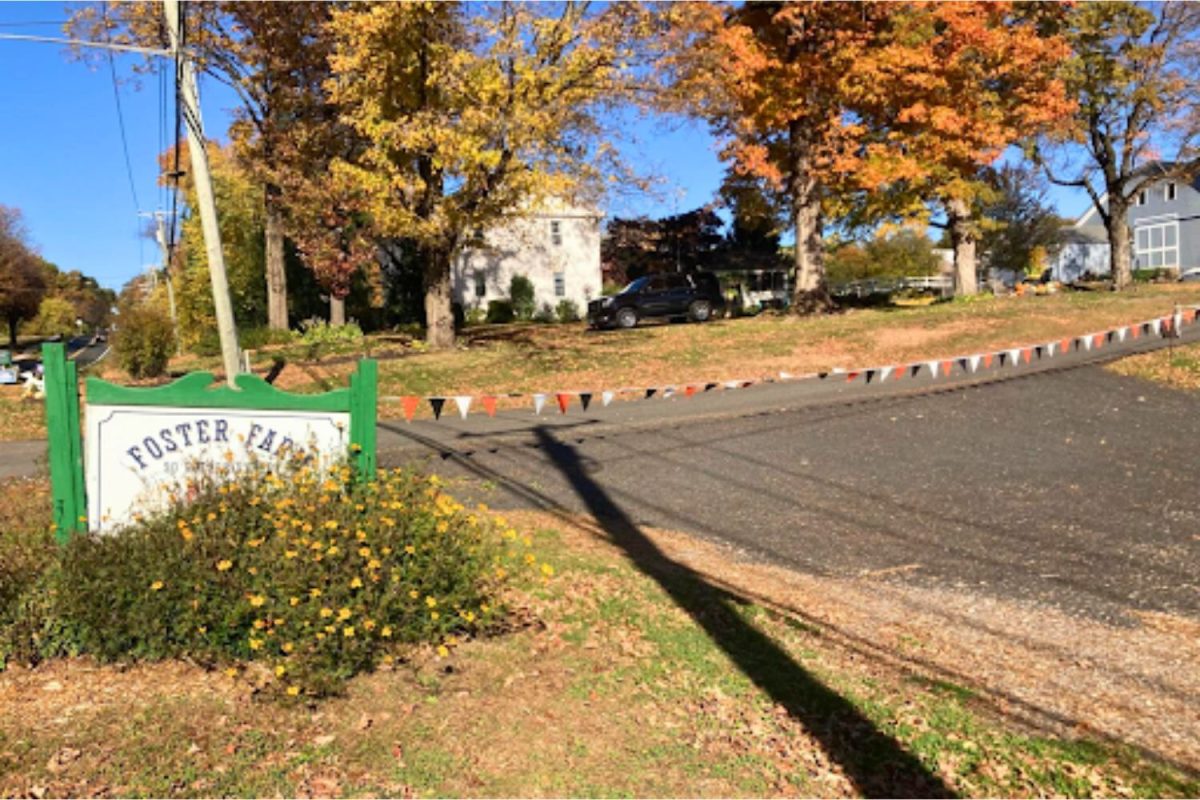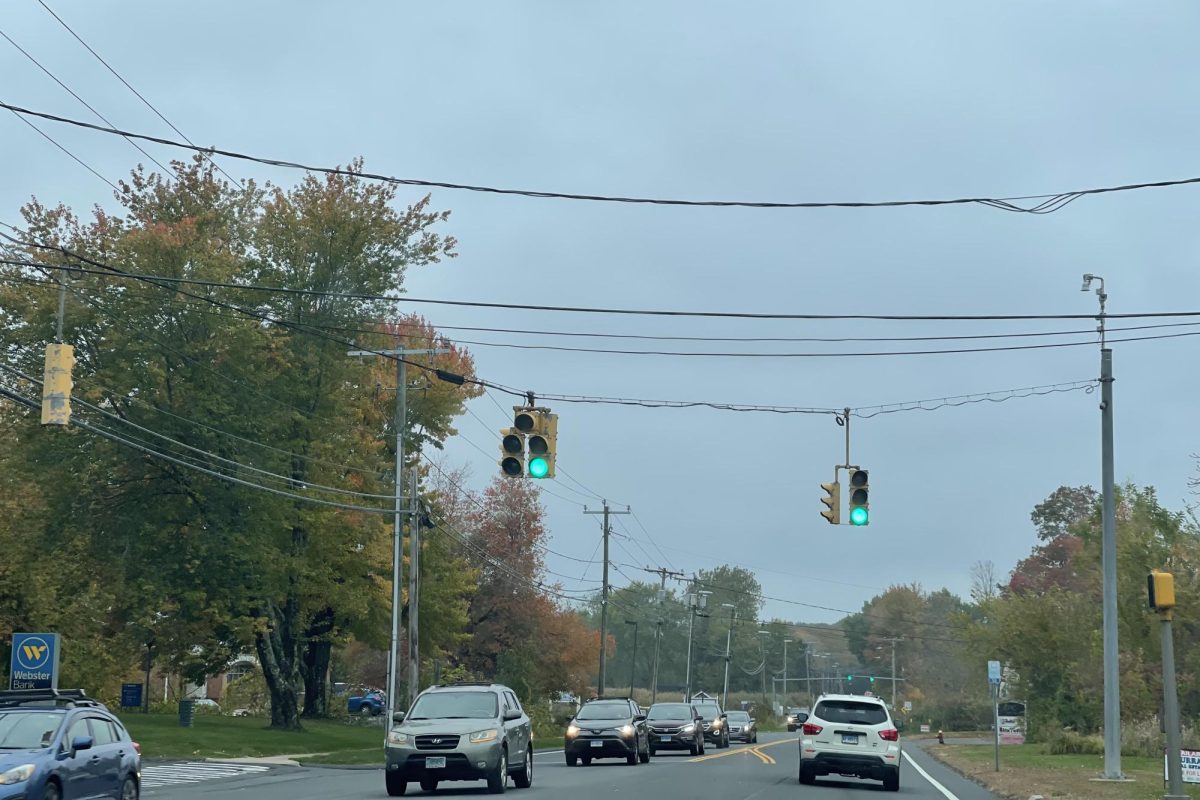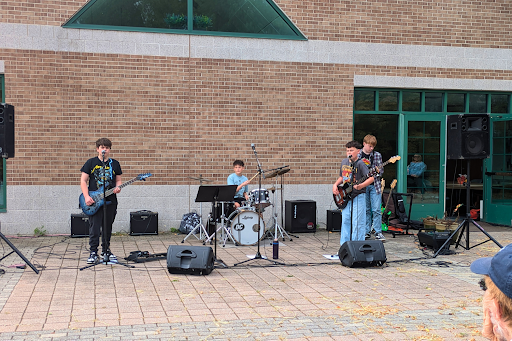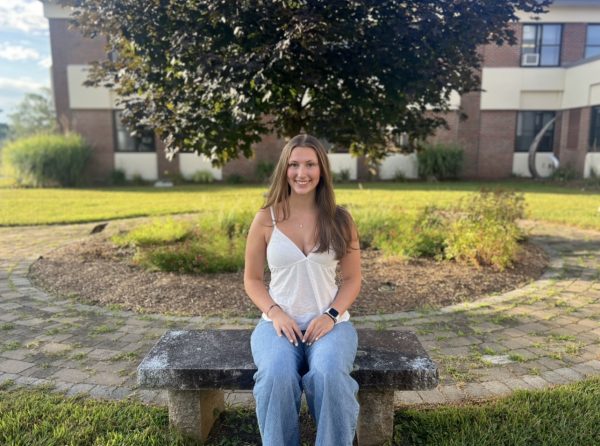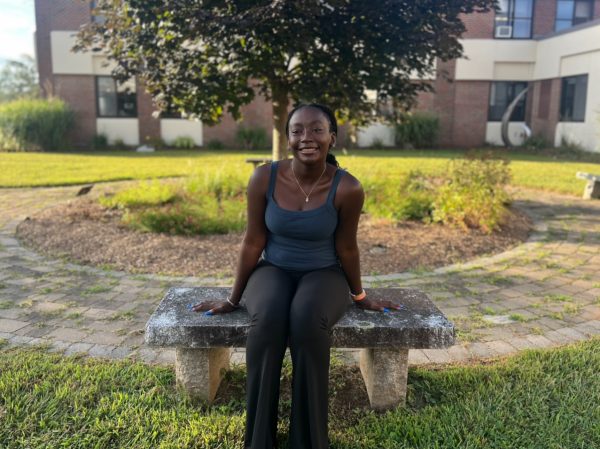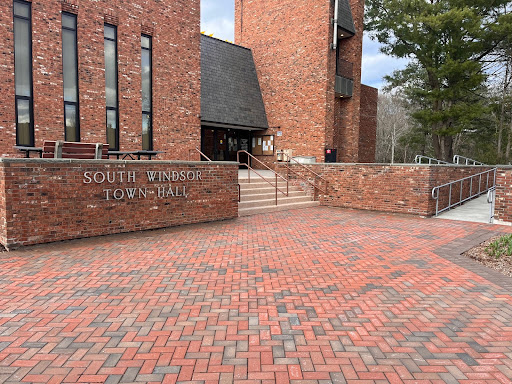
On Monday, April 7th, the South Windsor Town Council held its regular meeting, extended to four hours, which drew a large turnout of teachers, parents, and residents who shared their perspectives on the Board of Education’s proposed 2026 budget.
In response to the projected increasing enrollment of students in the South Windsor School District, Board of Education members were faced with raising the budget for the 2025-2026 school year by 5.97%, for a total budget of $100,230,328, in order to provide adequate funding for students and staff.
As the South Windsor School District continues to see a rise in enrollment, more resources are needed to support students and teachers. Currently, the education of one student costs $18,000 per year and “between 2015 and 2024, district-wide enrollment has increased by 969 students and is projected to grow an additional 479 students at the peak in 2033” (Bd. of Ed Budget Presentation).
Many residents believe that the South Windsor Board of Education budget needs an increase to keep up with this rapid growth. However, other residents believe that the budget is adequate as is, and an increase would only amplify residents’ taxes.
There were multiple speakers at the town meeting both in support and in opposition of the increase in the school budget, giving their input on how the increase in the budget will help the schools or how it will affect the outcome of taxes in the town.
Opponents of the increased school budget argued that continuing to raise it would lead to higher taxes for residents.
However, there were multiple people who spoke in favor of the increase in the school budget, making the point that the town has already invested in the schools, an example being the four rebuilt elementary schools, and that the town of South Windsor should be able to see it through and give the children opportunities to explore their interests.
South Windsor High School English teacher Dalton Hawie was one of the many teachers who spoke on the increase to the school budget. Hawie started his teaching career in the town of South Windsor after finishing his education at UCONN. One of the many reasons Hawie chose South Windsor, and continues his career in the town of South Windsor, is because he believes both students and staff are fully supported by the community.
Hawie believes the district must remain progressive; while the current budget may be sufficient to support the growing population, it falls short of funding program expansions that other schools have already implemented.
“Each community in the state has something of value to offer, for us it is our schools,” Hawie explained. “Our property values are propped up by the schools; our population is employed by them, and our future rests on the ability for the district to attract professionals to the town to come and work.”
Timothy Edwards Middle School teacher, Juliana Lyons, also came to the meeting to speak about the budget increase. Lyons has been teaching in the district for 11 years. Before that, Lyons was a student in the South Windsor School District, and she has seen how every single dollar of the budget impacts the students and programs at the school. At the meeting, Lyons hoped to give some personal insight that she has experienced being an educator and a student in the district.
“I have the unique privilege of seeing the children in this town thrive. And, it’s because of the countless opportunities and support that this district provides,” Lyons said. “From the arts, to athletics, to counseling programs, STEM opportunities, international celebrations and specialized support, every child in South Windsor has the chance to see success, happiness and acceptance.”
Many South Windsor Residents stated South Windsor has an extraordinary school system, with South Windsor resident Gloria Doherty commenting that it’s the top 5th in the county, top 6th in CT and top half in the country.
South Windsor also has the highest enrollment rate and this is projected to continue increasing.
Residents like Lyons believe that many people want to buy homes in this town due to the education that the town provides. If the budget has a negative impact on the schools, the schools will be unable to sustain these rankings.
Many residents who were in opposition of the budget worried that if the increase goes through then they will experience an increase in property tax.
According to the South Windsor Real Estate Calculation Form, the current (2024–2025) mill rate is 34.46 mills, meaning taxpayers pay $34.46 per $1,000 of assessed property value. This rate includes funding for the school budget, which accounts for 62.28% of the property tax calculation.
With a proposed 5.97% increase, the mill rate could rise to 36.52 mills. If an additional 2.06 mills is added, the total could reach 38.58 mills, resulting in an additional $412 in taxes annually for a home assessed at $100,000—from $3,446 currently to $3,858 in the 2026 tax year.
The Prowl reached out to citizens who were opposed to the budget increase but has received no comment on the matter.
South Windsor High School’s math teacher, union leader, resident, and South Windsor parent, Mathew Eppler, spoke at the town council meeting and conveyed his thoughts on the increase of the budget
Eppler saw both sides of the argument being made and understood how the individuals in this town, especially the ones who don’t have children going through the South Windsor School system, may not value or immediately see the need for the budget increase.
“The issue of taxes is always a challenging topic for any community,” Eppler stated. “Understandably, increases mean higher costs for individuals, and it can often be unclear where that money is going or how it’s being used. Some town residents, especially those without children currently in the school system, may not see the immediate value of budget increases.”
Eppler also explained how Superintendent Dr. Kate Carter and the Board of Education have the responsibility of evaluating, and considering, all the factors that impact and are going to impact the school district and being able to determine the appropriate level of funding that is necessary and needed for the school budget.
Other residents such as Phil Koboski believe that the budget makes a large impact on the schools and will continue to have one for years to come.
Koboski made the point that if the town is to cut out something from the budget, foreign language as an example, to save money, it would be very difficult to put it back in the school system later on. A common sentiment during the meeting was that it would be like kicking the can down the road, and that would only cause further problems and budgetary increases for the town in the future.
Regardless of their stance, everyone who attended the meeting contributed to a powerful sense of unity. The voices of teachers, parents, and administrators resonated with a shared commitment to supporting both educators and the school system, leaving the room filled with a deep sense of community and purpose.




